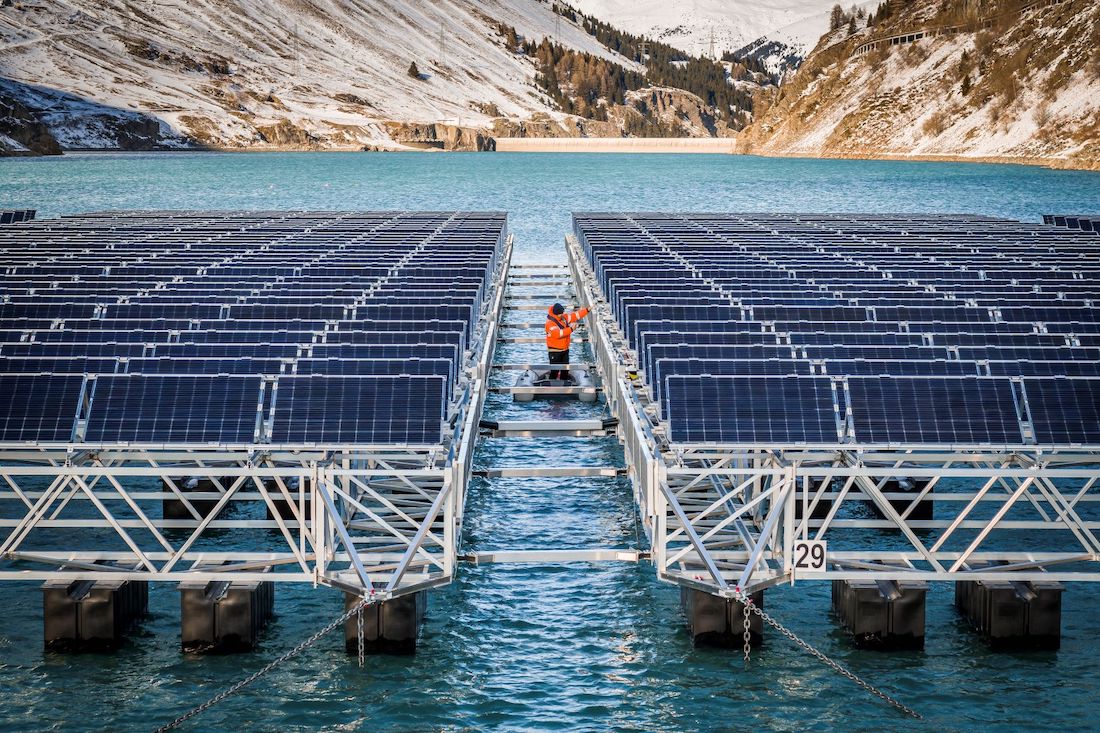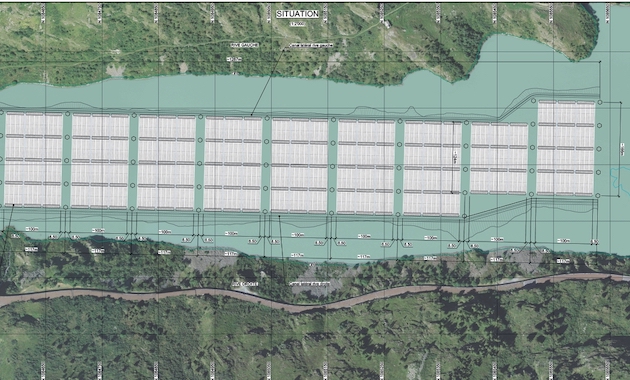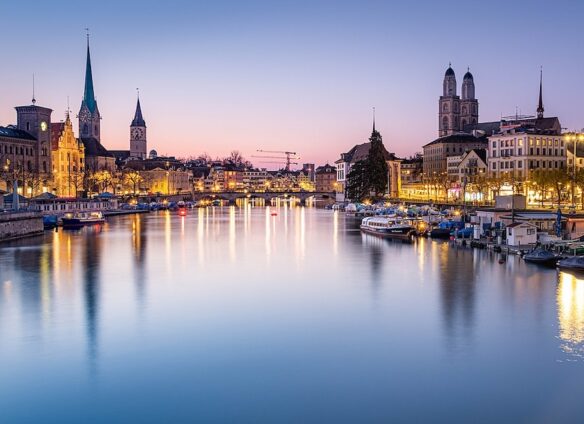Tokyo (SCCIJ) – Switzerland is making progress in utilizing the sun for its electricity needs: The small community of Bourg-Saint-Pierre has given the green light to the electricity provider Romande Energie to construct the world’s largest alpine floating solar park. This unanimous decision supports an endeavor that takes solar energy production to new heights.

The Lac des Toules solar power plant does not pose a threat to any aquatic ecosystems: the reservoir is drained every winter, with no time for flora and fauna to develop (© Romande Energie).
Panels from 2025
The forthcoming large-scale photovoltaic installation will cover a 19-hectare surface of the 61-hectare Lac des Toules, almost a third of the lake. The project is estimated to generate 22 GWh per year by employing approximately 27,000 solar panels, sufficient to power an average of 6,200 households. This equals nearly 90% of households in the Entremont district.
The new project will take shape with civil engineering works starting in the spring of 2024, followed by the installation of the first floating structures in the summer of 2025. The complete setup is scheduled for no later than 2030.
This initiative complies with new federal legislation, especially the Federal Energy Act, and qualifies for subsidies if partially operational by the end of 2025. The anticipated amount could bring the total cost of this large-scale floating solar park close to 100 million francs.

A projection of the future solar park, which will cover almost a third of the Lac des Toules (© Romande Energie).
Successful predecessor
Romande Energie, a pioneering leader in alpine solar power, has been at the forefront of floating solar installations for over a decade. Its groundbreaking project on Lac des Toules began in 2013 with a small 60-square-meter pilot structure followed by a larger 2,240-square-meter demonstration project in 2019. The structures were airlifted to the lake.
This initial project used bifacial solar panels spread across 35 floating structures. It revealed the potential for alpine solar energy production to be up to 50% higher than those at sea level. Although the results after three years showed only a 30% gain, Guillaume Fuchs, co-director of Energy Solutions at Romande Energie, remains confident.
Lessons learned
The difference is explained on the one hand by the requirement to build in favor of winter production and on the other hand by the additional constraints of the demonstration project. In particular, it is closer to the mountains than the ground infrastructure tested during the feasibility studies. This change and others have resulted in a loss of sunshine of up to one hour per day.
However, lessons learned from the demonstration phase remain critical. “We’ve learned a lot for future operations. The original concept remains the same, and we are very confident for the next phase with the largest Alpine floating solar park which will soon be realized,” Fuchs noted.
Text: Greater Geneva Bern area (Editing by SCCIJ)





























